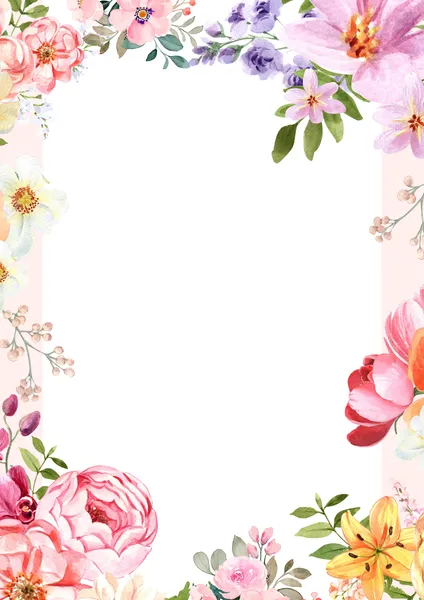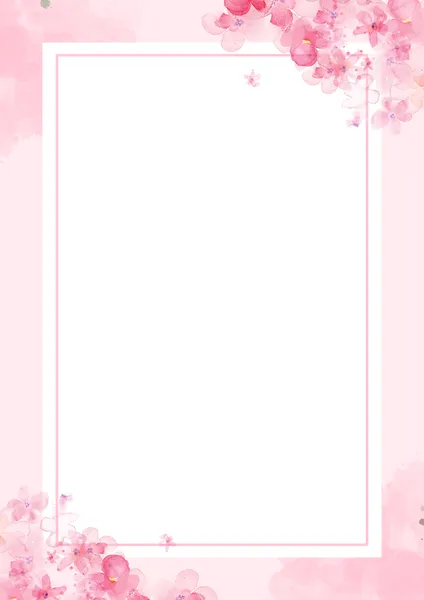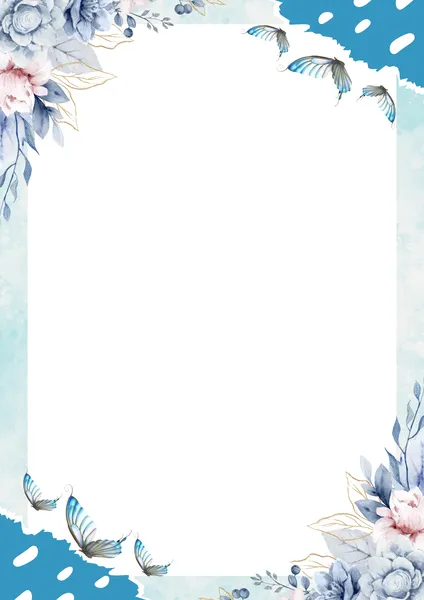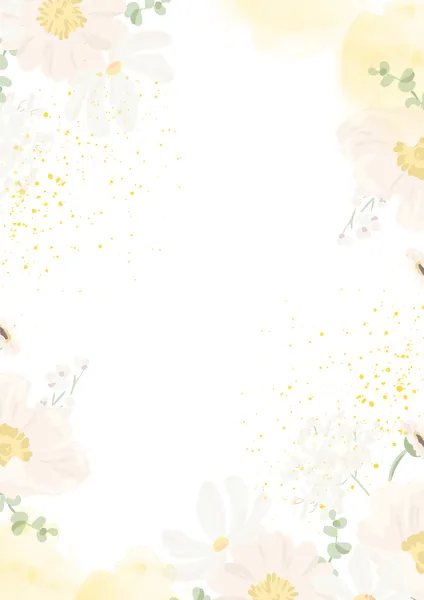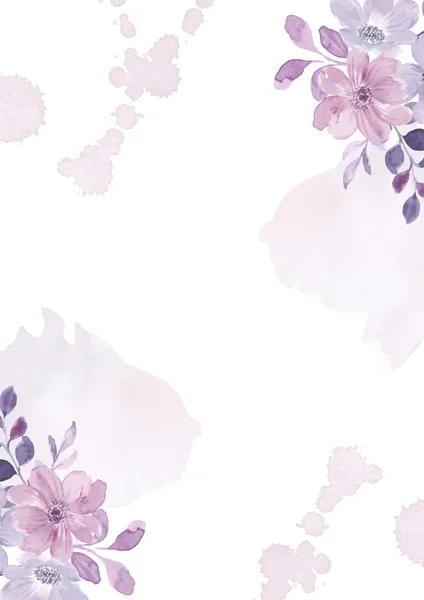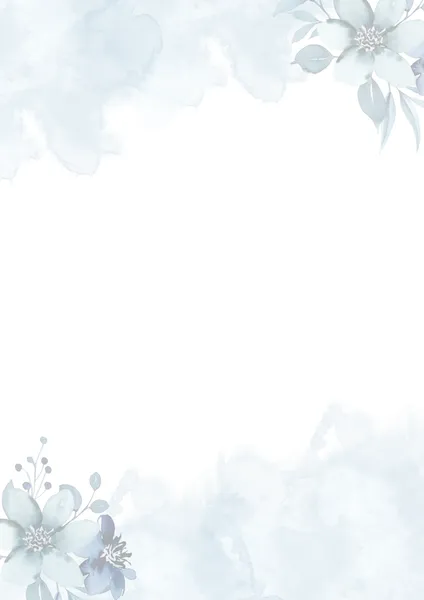Watercolor provides both a strength and weakness – at the same time, the paintings look alive and rich in colors and, at the same time, look watered down; therefore, watercolor is perfect for adding some art to the page.
While the focus often lies on the main subject, watercolor borders can transform a simple page into a captivating work of art. Instead of masking depth and dimension, these delicate frames augment essential aesthetic elements and allow explorative forays into color, texture, and technique.
The Allure of Watercolor Borders
Watercolor borders possess an undeniable charm. Non-mechanical because of their sizes, gentle differences in tones and surfaces generate dynamic movements. Whether you’re journaling, creating invitations, or simply adding a touch of artistry to your sketchbook, watercolor borders can:
- Enhance Visual Appeal: A good border helps capture a reader’s attention by looking at the borders and also helps enhance the appearance of the page in question.
- Define Space: Lines and edges of fields can define what is in focus and what is supplementary. Thus, they form a hierarchy.
- Express Creativity: That is why one can try combining various techniques with various colors as much as one wants; it is impossible to devise unlimited possibilities.
- Add Personality: It will also give you a more personalized input that your chosen style and color will appear on each page’s border.
Essential Watercolor Techniques for Borders
There is much advice on painter’s websites and blogs on creating borders with watercolors, but simple knowledge of a few techniques opens a vibrant graphics potential. Here are a few to explore:
Wet-on-Wet:
This technique is one where pigment is applied on a sheet of paper that has been moistened. The colors will mix organically to reach the next layer. The base gives an okay cut where the colors blend to create soft o, organic shapes naturally.
- Preparing the Paper: Paper can be wet using a clean sponge, a large brush, or a sprayer. For large areas, a sponge or a spray bottle is the most suitable solution application method. The paper should be wet all over but not too moist, as that would be dangerous for the process. That is what should be just starting to turn dull.
- Controlling the Blend: The water concentration dilutes or increases the extent of color. There is usually a high degree of blending when using more water as opposed to when the edges are well-defined with little water.
Creating Effects:
- Soft Washes: To get an even wash on the wet paper, first dilute the complementary color and apply it to the paper.
- Blooms: Add some highly concentrated pigment to the wet wash to create naturally aesthetically appealing blooms.
- Gradients: Under the second layer, use two or more colors on the wet paper and let them flow naturally to produce a natural transitive look.
Dry Brush:
When applying oil paint with a brilliantine-like brush, which retains very little oil and has little paint, the finish is more like a drawing. This technique is suitable for putting fine lines and details and excels in creating variations in color shades. For the method, hard-hiked brushes with stiff bristles should be used. Intense pressure from the brush is also not needed. By carrying lighter pressure, they create sheer lines while exerting more pressure and producinge bold lines. This is good for making textures such as foliage, fur, or rough for everyday use.
Salt Technique:
If the watercolor paint is wet, add some salt over it. When the paint is still damp, the colors come to the surface to form patterns and textures that the salt carries around within the solution. Various salts are different in their impact. Table salt forms thin flecks, and rock forms more significant and contrasting patterns. After the paint has dried, remove the salt by simply brushing over gently.
Masking Fluid:
This fluid can be used to paint off areas of the paper that you desire to remain white. Use it with a brush or a ruling pen to get finer-width channels. It is recommended that it be left to dry before painting the surface. After the paint dries, remove the masking fluid with your finger or an eraser and rub it off.
Free Watercolor Borders
Color Blending: A Key to Beautiful Borders
Given the imperative stake of borders in esthetic layouts, careful color blending is essential to generate proper combinations.
Color Theory:
- Primary Colors: Red, yellow, and blue. The imposition of other colors cannot produce these colors
- Secondary Colors: Green, orange, and violet. These are obtained by combining two basic colors of pigments.
- Tertiary Colors: These are obtained by combining one of the primary colors with an adjacent secondary color (for example, red with Orange).
Tints, Shades, and Tones:
- Tints: Made by combining a color with white.
- Shades: Invented as a result of mixing black with another color.
- Tones: Made with grey out of another color.
Color Combinations:
- Warm Sunset Palette: Orange, yellow, red, and pink shades.
- Cool Ocean Palette: Blues, greens, and violets.
Mixing Colors:
- Enough color in the wet palette and blend your colors on a surface ( an example of this palette is the ceramic palette, or you might take a plastic one).
- Begin with a low percentage wedge and gradually add more, gradually increasing the concentration to the right tint. Try not to mix the shades too much; it concludes that they look blended, and the color of the shades does not stand out as it should.
The possibilities of making borders unique and artistic
Geometric Patterns:
You can draw other geometrical shapes inside the border with paint masking tape or stencils. Paint these shapes with other colors and in other techniques. Examples:
- Triangles are enclosed inside triangles with different colors in each row.
- A border is created from a combination of squares and circles coalescing at the edges.
- A geometric design of a border with a central motif and medallions extending into concentric circles.
Natural Forms:
Draw inspiration from nature. This calls for the formation of borders that resemble the forming of leaves, flowers, vines, or flowing water. Examples:
- A wide band of winterized oak leaves in stylized decor along the perimeter of the notebook.
- A narrow band of delicate foliage of cherry trees painted in pink and white.
- A border that somehow resembled the weaving of a stream in the blues from dark to light.
Abstract Expressions:
- Let your intuition guide you. Actualize accidents and develop an erratic stroke, add, or even improper combination of colors.
- For line variation, try dabbing with one brush size; in another, try swirling and flicking the brush to create a contrasting effect. Conversational on the attitudes of using the brush and the subject of the picture, choose to develop the energy of a photograph.
Beyond the Basics: Advanced Techniques
Negative Space:
- In most cases, the border is painted to differentiate it from the rest of the paper, painting only the region inside the border, leaving the border itself as the paper.
- This, in turn, gives a fascinating and provocative look. For example, paint a dark wash inside where one wants the border to be like here; the paper’s whiter is the border.
Layered Borders:
- Establish at least five segment layers with different colors and surface characteristics. You notice that a light color will help you organize the whole layering process, while the detail and texture may be added during additional stages.
- For instance, a light blue would create a base, followed by a darker blue to make waves, and lastly, white would create foam.
Collage Elements:
- You may also layer other materials, such as dried flowers, pressed leaves,s or fabric, into your border of choice.
- Make use of an adhesive that dries transparent once applied to the elements. It is possible to protect the collage after that using clear varnish or any other sealant of your choice.
Tips and Considerations
- Practice Makes Perfect: The leading here is relatively fluent and can only become easier with time.
- Quality Materials: As much as possible, use high-quality watercolor paints, brushes, and paper when painting.
- Experimentation is Key: You should not be afraid to go out there and experiment.
- Embrace Imperfections: Watercolor is a rather unrestrictive kind of painting.
- Find Inspiration Everywhere: It is always important to look around you for inspiration.
This offers more detail and practical advice, making it a helpful guide for creating beautiful watercolor borders. What’s great about the lesson is that it should incorporate visuals to get better results.
